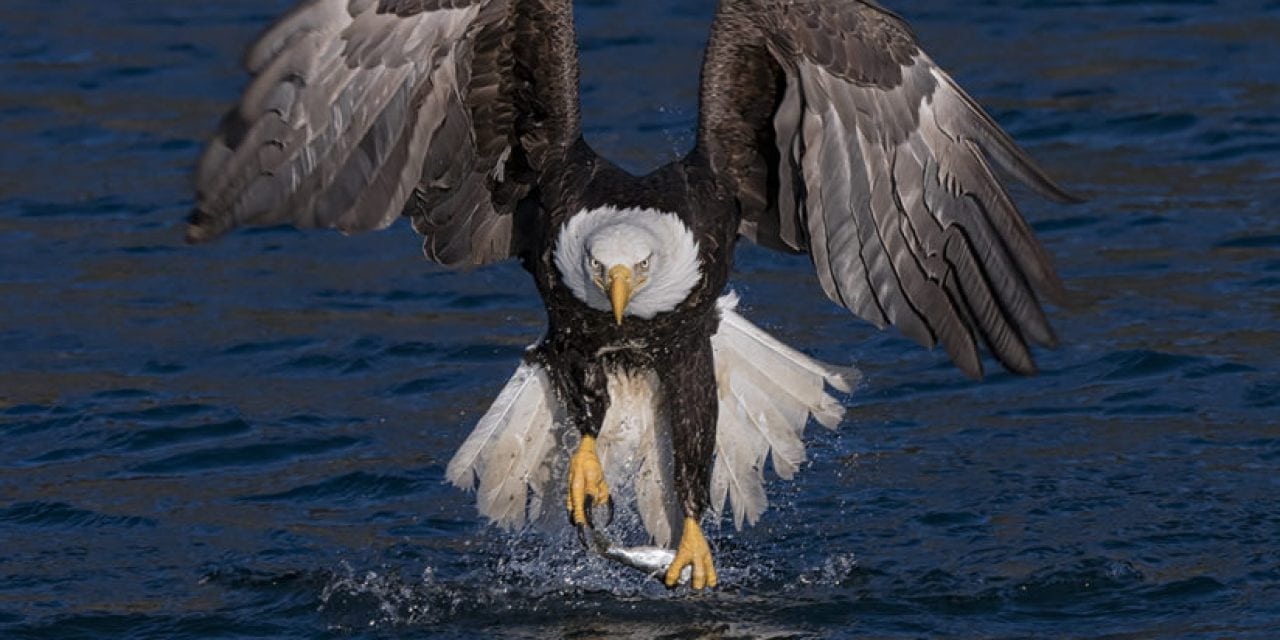
Arguably, no photographic subject is more challenging than capturing birds in flight. “Take eagles, for example,” explains Olympus Visionary Scott Bourne, “which change direction mid-air at 40 mph. Your AF system has to be up to the challenge.”
Bourne found the perfect camera for his photography in the Olympus OM-D E-M1 Mark II. Capable of capturing up to 18 frames per second with Continuous AF Tracking using its electronic shutter, the camera provides the speed and precision that Bourne needs to record the sharp, detailed images of birds in flight that have earned him a stellar reputation among clients and fans.
He judged the system critically as any professional would, and decided to sell his professional DSLR system to make the switch to the much lighter OM-D E-M1 Mark II. “I can’t pretend I have an eagle in sharp focus—it either is or it isn’t,” Bourne says. But for Bourne’s work, the advantages of the Olympus system go beyond those of mere physical weight and size. “Up until now, there hasn’t been tracking AF reliable enough to do what I do,” he says. Referring to the OM-D E-M1 Mark II’s AF system, Bourne notes the exceptional performance of its 121 AF points that cover the entire sensor. “That gives you an advantage right off the bat. Once I have made appropriate adjustments to set the AF system correctly, depending on my subject, my keeper rate exceeds that of my previous pro cameras. When I switched to the Olympus system, my clients didn’t notice.”
For Bourne, it’s not just the impressive capabilities of his camera but also the extensive lens selection that make the Olympus system the best choice for him. His go-to lenses are the M.Zuiko 40-150mm f2.8 PRO and 300mm f4.0 IS PRO. Speaking of the 40-150mm f2.8 PRO, Bourne says, “I’m in love with that range,” which, with the camera’s Micro Four Thirds sensor, gives him an equivalent of 80-300mm. “When I’m shooting eagles in Alaska, for example, 75 percent or more of my images are taken with that lens.”
If he needs extra telephoto reach, it’s the 300mm F4, equivalent to a 600mm super-tele. “That lens is amazing. I can’t say enough about it. It’s one of the most impressive lenses ever created,” he says. It’s exceedingly sharp, and Bourne notes its superior close-focusing capability. “A close-focusing distance of less than 5 feet—instead of 15 feet with lenses of equivalent focal length for DSLRs—means I can fill a frame with a bird’s eye if I want to, while remaining at a respectful distance.”
Another big advantage is Olympus’s advanced 5-Axis Image Stabilization, which compensates for all types of camera motion to provide up to 5.5 stops of correction when shooting handheld, giving Bourne the freedom to react quickly to his fast-moving subjects. And because this technology is built-in to the camera body, it’s available no matter which lens Bourne chooses.
To those photographers who are wary of trading their large DSLRs for a mirrorless system, Bourne is quick to reassure. “I’m making 30×40-inch prints with the images from my OM-D E-M1 Mark II. And with its much lighter weight, I can stay out and shoot longer, which is a huge advantage for wildlife photography.”
Hear more from other photographers who have made the switch to the Olympus OM-D system at getolympus.com/neverlookback.
The post Olympus OM-D E-M1 Mark II: Speed & Precision appeared first on Outdoor Photographer.
















